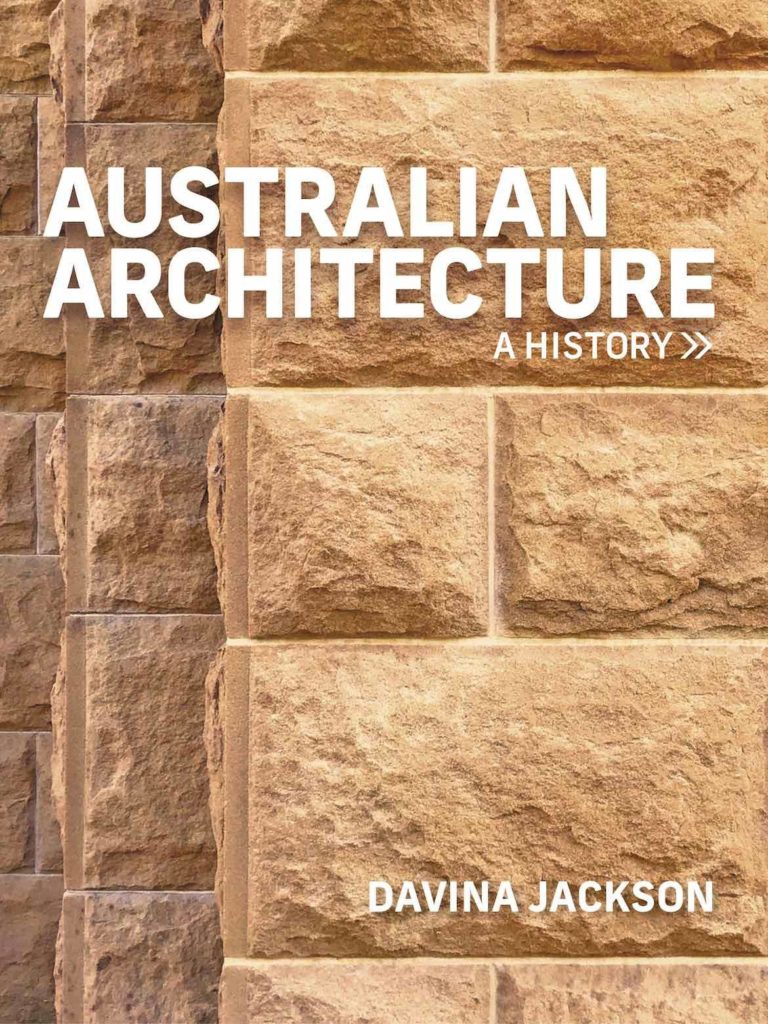
- Free Article: No
- Contents Category: Architecture
- Review Article: Yes
- Article Title: Foundations and landmarks
- Article Subtitle: An ambitious look at Australian architecture
- Online Only: No
- Custom Highlight Text:
It is more than fifty years since anyone attempted to comprehensively describe the history of Australian architecture. In 1968, Sydney academic J.M. Freeland’s Architecture in Australia: A History was a landmark publication. The timing of its release was intended to celebrate 180 years of building on the continent since formal European invasion, marked by the arrival of the First Fleet in 1788. As with any ambitious documentary exercise, Freeland’s book was greeted with a mixture of admiration and scorn.
- Article Hero Image (920px wide):
_p183_THE_TOWN_HALL,_PERTH,_WESTERN_AUSTRALIA.jpg)
- Article Hero Image Caption: Perth Town Hall as shown in a British Library digitised image extracted from Western Australia in 1891 by Francis Hart (1892) (British Library HMNTS 10492.ee.25. via Wikimedia Commons)
- Featured Image (400px * 250px):

- Alt Tag (Featured Image): Philip Goad reviews 'Australian Architecture: A history' by Davina Jackson
- Book 1 Title: Australian Architecture
- Book 1 Subtitle: A history
- Book 1 Biblio: Allen & Unwin, $30.95 pb, 368 pp
- Book 1 Cover Small (400 x 600):

- Book 1 Cover (800 x 1200):

The book is structured into ten chapters arranged chronologically, each covering a span of twenty to thirty years, with the exception being the first, which covers – startlingly – pre-contact history to 1799. The inclusion of Indigenous architecture in that first chapter is welcome. Freeland had nothing on the topic and Jackson’s acknowledgment of Paul Memmott’s important book, Gunyah, Goondie + Wurley: The Aboriginal architecture of Australia (2007) is apposite. But five and a half pages devoted to Indigenous architecture in a chapter of twenty-three pages is not enough. Later in the volume, Jackson rightly mentions contemporary Indigenous architects such as Dillon Kombumerri and Kevin O’Brien, and her section titled ‘Architectures of Conciliation’ is one of the best in the book. But throughout the volume there is nothing on Australia’s shameful treatment of its Indigenous peoples, as illustrated through the story of mission architecture, which persisted well into the 1950s and was found across the entire continent. Nor is there discussion of the government’s failed attempts in the 1960s and 1970s to deal with Indigenous housing issues or even the appearance in Canberra of the Aboriginal Tent Embassy in 1972. To be fair, Jackson does make occasional mention of moments when Indigenous peoples were moved on from urban sites to make way for major public buildings such as Victoria’s Parliament House (1855–91) in Melbourne. But the opportunity to embed Indigenous presence across the entire ‘history’ and to bring the story of Australian architecture into line with other recent survey histories of Australia is one not taken.
Instead, Jackson gives a lively and inclusive account of building types and architectural styles over two and a half centuries, and to a large degree she succeeds in this aim. Important inclusions are Jackson’s notes on the active role played in the country’s nineteenth-century settlements by theatres as places of popular entertainment. She also highlights a significant series of flat-roofed Sydney houses that might be understood as precursors of the modern. On the other hand, this exhaustive focus on building types means that coherent historical narratives are hard to trace throughout the book. The problem is that in attempting to be comprehensive there are countless paragraphs that read as lists of buildings (many undated), particularly in the last few chapters. As a result, there are moments when the book reads not as a history but as a gazetteer.
There is also the curious inclusion of special inserts on buildings and places that one might visit, such as Perth Town Hall or the Bowali Visitor Centre in Kakadu National Park. This is not necessarily a bad thing, but the choice is random and the motivation unclear. After all, this is not and does not set out to be a guidebook. There are also double-page inserts on styles and influences, where Jackson resorts to made-up terms like ‘Neo-Moderne’, ‘Blobitecture’, and ‘Datatecture’, which are not helpful to the architecturally uninitiated and, for the informed reader, come across as fast and loose journalese. Further, she uses international examples to illustrate terms such as ‘Minimalism’ and ‘Postmodernism’. Why not use Australian examples?
Elsewhere in the text, in describing buildings such as Sydney Town Hall as ‘wedding cake architecture’, Jackson falls into the trap of easy negative tropes that have long denigrated the so-called Boom Style architecture of the 1880s. Jackson also uses her own made-up terms like ‘Matchstick Mannerism’, which, in certain circles, makes light of the seriousness and diversity of late twentieth-century design practice. There are also multiple errors of fact and omissions. For example, Australia’s architect-representative for the United Nations Headquarters in New York was not ‘Guy Sollieux’ but Giles A. Soilleux. Image captions omit Marion Mahony Griffin from the design of Newman College and Evan Walker from the Canberra School of Music. These are just three examples, but they point to a book that could have waited another year for a thorough checking. While they might seem minor, in totality their sheer number undermines an argument for the book’s definitiveness.
Perhaps the greatest problem with Jackson’s book is its lack of spatiality. There is little sense of buildings and structures being erected across a continent of extraordinary scale and diversity of landscapes, or of the distinctive architectural cultures concentrated in its disparate capital cities. For the international reader, there is no map of the entire country, no plans (apart from Colonel William Light’s plan for Adelaide) of any Victorian era city or regional town, or any subdivision patterns that help to describe the emergence of the narrow-fronted terrace house (which garners no discussion anyway). There is little mention of suburban vernacular traditions or buildings associated with agriculture such as shearing sheds, or mining and its related infrastructures and townships – activities that defined a nation and, in large part, distinguished aspects of Australian architecture from the rest of the world until around 1960. Insufficient attention is paid to twentieth-century government efforts in the provision of social housing in urban, suburban, and regional settings. Nor is there a sense of Australia operating as one element in an expanded spatial/global network of empire in the nineteenth century. Here, for example, reference to Alex Bremner’s book, Imperial Gothic: Religious architecture and High Anglican Culture in the British Empire, 1840–1870 (2013), and Jaynie Anderson and her fellow authors’ recent monographs on Archbishop Goold and architect William Wardell’s St Patrick’s Cathedral in Melbourne, would have illuminated any discussion of the hundreds of churches built across the country in the nineteenth century.
Despite its failings, Jackson’s book – like Freeland’s – will have some impact. Its breadth of ambition is commendable, but it will serve, as Freeland’s did, to prompt current and future generations of historians and writers on architecture to frame more precisely and more responsibly any survey accounts of Australian architecture. Significantly, it will prompt serious scholarly attention on accurately describing styles, theoretical ideas, and the groupings of architects and buildings, especially those of the past forty years. Perhaps most important of all, it will inspire others to contextualise Australian architecture as geographically, climatically, politically, spatially and materially placed, with design traditions that have deep as well as contemporary histories. It will usher forth architectural histories that address the inherent tension between settler colonialism and Indigenous understandings of shelter on Country and question the role of architectural production and environment from a longitudinal and contemporary standpoint. In short, it will prompt a better form of story.


Comments powered by CComment